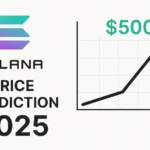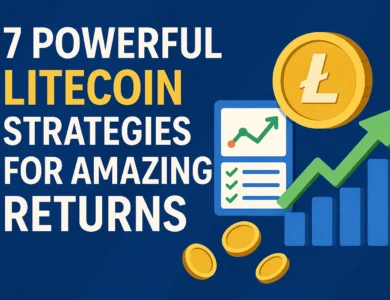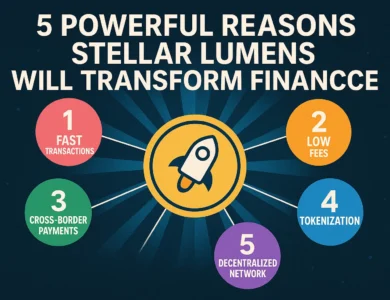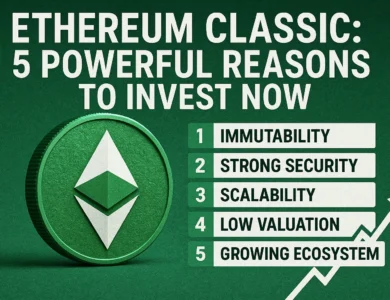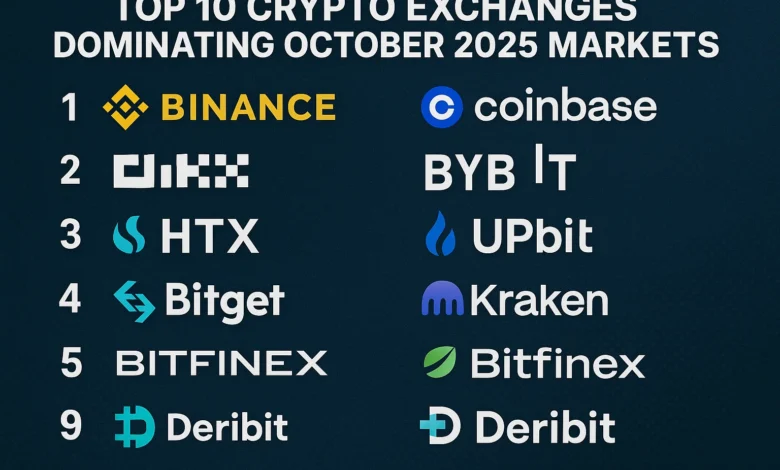
The crypto exchanges landscape has undergone remarkable transformation as we progress through October 2025. With digital asset adoption accelerating globally and institutional participation reaching unprecedented levels, choosing the right crypto trading platform has become more crucial than ever for both novice investors and seasoned traders. The fourth quarter of 2025 has witnessed trading volumes surge across major platforms, signaling renewed market confidence and increased liquidity.
Today’s leading crypto exchanges offer far more than basic buy-and-sell functionality. They have evolved into comprehensive financial ecosystems providing advanced trading tools, staking services, decentralized finance (DeFi) integrations, and institutional-grade security measures. Binance continues to lead globally with unmatched liquidity and breadth of trading pairs, while competitors have carved out their niches through specialized features and regulatory compliance.
The October 2025 market environment presents unique opportunities and challenges. As traders prepare for the remainder of the year, understanding which platforms offer the best combination of security features, competitive fees, and innovative tools is essential. Currently tracking 203 crypto exchanges with a total 24-hour trading volume of $249 billion, the market demonstrates robust activity despite recent volatility. This comprehensive guide examines the top crypto exchanges that are defining the industry standards and reshaping how millions of users interact with digital assets.
1. Binance: The Undisputed Volume Leader
Platform Overview and Market Position
Binance accounted for over 60% of global crypto trading volume in 2024, and this dominance has continued into October 2025. Founded in 2017, Binance has established itself as the world’s largest cryptocurrency exchange by virtually every metric that matters—trading volume, user base, and available trading pairs.
Key Features and Advantages
The platform boasts a daily trading volume of $18 billion and offers over 500 cryptocurrencies and trading pairs. Beyond basic trading functionality, Binance provides comprehensive services including futures trading, options, staking, savings products, and even travel booking services. The exchange’s ecosystem approach has created a one-stop destination for crypto users.
Fee Structure and Competitive Pricing
Binance offers a competitive trading fee of 0.1%, which remains among the lowest in the industry. Users can further reduce fees by utilizing the native BNB token or achieving higher VIP tier status through increased trading volume.
2. Kraken: Security-Focused Excellence
Reputation and Regulatory Compliance
Operating since 2011, Kraken has built its reputation on transparency and regulatory compliance. The platform has grown to more than 6 million users, with its CEO actively encouraging self-custody and the principle “Not your keys, not your crypto”. This philosophy has resonated strongly with security-conscious traders.
Financial Performance and Growth
In Q2 2025, Kraken reported $412 million in revenue, up 18% year-over-year, with total exchange volume of $186.8 billion, representing a 19% increase. The platform’s assets under management reached $43.2 billion, demonstrating sustained growth and user confidence.
Trading Infrastructure
Kraken offers more than 350 cryptocurrencies to buy, sell, and trade, providing extensive variety while maintaining stringent listing standards. The exchange excels in margin trading capabilities and advanced order types, catering to professional traders.
3. Coinbase: The Beginner-Friendly Gateway
User Experience and Accessibility
Coinbase has established itself as the premier crypto trading platform for newcomers to digital assets. Coinbase stands out for ease of use and regulatory clarity, making it perfect for beginners or users in the U.S. who prefer a clean, simple experience.
Regulatory Standing and Compliance
As a publicly-traded company on the NASDAQ, Coinbase maintains the highest standards of regulatory compliance and financial transparency. This status makes it particularly attractive to institutional investors and conservative traders prioritizing regulatory certainty.
Educational Resources and Support
The platform invests heavily in user education, offering comprehensive learning resources, tutorials, and even rewards programs that allow users to earn cryptocurrency while learning about different projects. This approach has successfully onboarded millions of first-time crypto buyers.
4. Gate.io: The Altcoin Paradise
Extensive Token Selection
Gate.io has positioned itself as the go-to exchange for traders seeking exposure to emerging projects and lesser-known altcoins. The platform lists hundreds of tokens often unavailable on more conservative exchanges, appealing to risk-tolerant investors seeking early-stage opportunities.
Trading Features and Innovation
The exchange offers spot trading, margin trading, futures contracts, and copy trading features. This comprehensive toolkit allows users to implement diverse trading strategies across multiple market conditions.
5. OKX: Innovation Meets Functionality
Platform Capabilities
OKX combines powerful trading infrastructure with innovative features. The exchange has gained traction throughout 2025 by focusing on derivatives products, Web3 wallet integration, and NFT marketplace functionality—creating a truly multi-dimensional platform.
Global Reach and Accessibility
With strong presence across Asia, Europe, and Latin America, OKX serves millions of users worldwide. The platform’s multilingual support and localized services have facilitated its expansion into diverse markets.
6. Bybit: Derivatives Trading Powerhouse
Specialization in Futures Trading
Bybit has carved its niche as a derivatives-focused platform, offering sophisticated tools for futures trading and perpetual contracts. The exchange’s high leverage options and advanced charting capabilities attract active traders and day traders.
User Interface and Performance
The platform prioritizes trading performance with minimal latency, robust matching engines, and intuitive interfaces designed specifically for derivatives markets. This specialization has earned Bybit a dedicated following among professional traders.
7. KuCoin: The People’s Exchange
Community-Driven Approach
KuCoin markets itself as “The People’s Exchange,” emphasizing community governance and user rewards programs. The platform’s profit-sharing mechanism distributes trading fee revenue to KCS token holders, aligning incentives between the exchange and its users.
Token Selection and Early Listings
Known for listing promising projects early, KuCoin appeals to traders seeking opportunities before tokens gain mainstream attention. The exchange offers hundreds of trading pairs including many emerging DeFi tokens.
8. Gemini: Institutional-Grade Security
Regulatory Excellence
Founded by the Winklevoss twins, Gemini has distinguished itself through regulatory compliance and institutional-grade security features. The exchange holds various regulatory licenses and maintains insurance coverage for digital assets held in custody.
Target Audience and Services
Gemini primarily targets U.S.-based users and institutional clients requiring regulatory clarity and robust security infrastructure. The platform’s clean interface and straightforward fee structure appeal to conservative investors.
9. Bitfinex: Advanced Trading Tools
Professional Trading Environment
Bitfinex caters to experienced traders with sophisticated order types, margin trading capabilities, and advanced charting tools. The platform’s depth of features makes it suitable for professional traders executing complex trading strategies.
Liquidity and Market Making
As one of the longest-operating exchanges, Bitfinex maintains deep liquidity across major cryptocurrency pairs, ensuring efficient trade execution for large orders with minimal slippage.
10. Huobi (Now HTX): Asian Market Leader
Regional Dominance
Operating as HTX following a rebrand, this exchange maintains strong presence across Asian markets, particularly in regions where crypto adoption continues accelerating. The platform offers comprehensive services including spot trading, derivatives, and staking.
Innovation and Expansion
HTX has expanded its offerings throughout 2025, incorporating DeFi products, NFT trading, and blockchain infrastructure services. This diversification strategy positions the exchange for sustained relevance in evolving markets.
Factors to Consider When Choosing a Crypto Exchange
Security and Insurance
Security features should top any trader’s priority list. Look for exchanges offering two-factor authentication, cold storage for the majority of funds, insurance coverage, and proven track records without major security breaches. The cryptocurrency exchange you choose should demonstrate commitment to protecting user assets.
Trading Fees and Costs
Fee structures vary significantly across platforms. Compare maker/taker fees, withdrawal fees, and any hidden costs. Trading fees range from Binance’s 0.1% to Kraken’s 0.26%, though volume discounts and loyalty programs can reduce effective costs.
Available Cryptocurrencies
Consider whether the crypto trading platform supports the specific digital assets you wish to trade. While major exchanges list hundreds of tokens, availability varies, particularly for newer projects or region-specific tokens.
User Interface and Experience
The platform’s usability impacts trading efficiency. Beginners should prioritize intuitive interfaces, while experienced traders might prefer advanced charting tools and customizable dashboards. Test platforms with small amounts before committing significant capital.
Regulatory Compliance
Regulatory standing affects platform stability and user protection. Exchanges operating transparently within regulatory frameworks typically offer greater security, though they may impose stricter KYC requirements.
The Future of Crypto Exchanges: Trends in October 2025
Institutional Integration
October 2025 has seen accelerated institutional adoption, with cryptocurrency exchanges enhancing services specifically targeting hedge funds, family offices, and corporate treasuries. Enhanced custody solutions, OTC trading desks, and institutional-grade reporting tools have become standard offerings.
Decentralized Exchange Integration
Leading centralized platforms are integrating DEX functionality, allowing users to trade directly from their wallets while benefiting from centralized liquidity. This hybrid approach addresses user demand for self-custody while maintaining trading convenience.
Enhanced Compliance and Transparency
Regulatory scrutiny has intensified throughout 2025, pushing exchanges toward greater transparency regarding reserves, operations, and financial health. Proof-of-reserves audits and regular attestations have become industry standards.
Conclusion
The top crypto exchanges dominating October 2025 markets have earned their positions through consistent innovation, security enhancements, and user-focused features. Binance leads globally with unmatched liquidity and breadth of pairs, ideal for active and international traders, while platforms like Kraken, Coinbase, and others serve specific user segments through specialized offerings.
Selecting the right cryptocurrency exchange requires careful evaluation of your trading objectives, experience level, geographic location, and security preferences. Whether you prioritize low fees, extensive crypto selection, regulatory compliance, or advanced trading tools, the current landscape offers options suited to virtually every need.
As the cryptocurrency market matures and mainstream adoption accelerates, these leading exchanges will continue shaping how billions of users interact with digital assets. The platforms that succeed will be those balancing innovation with security, accessibility with sophistication, and growth with regulatory responsibility.
Read More: Cloud Mining 2025 7 Proven Strategies to Maximize Profits


